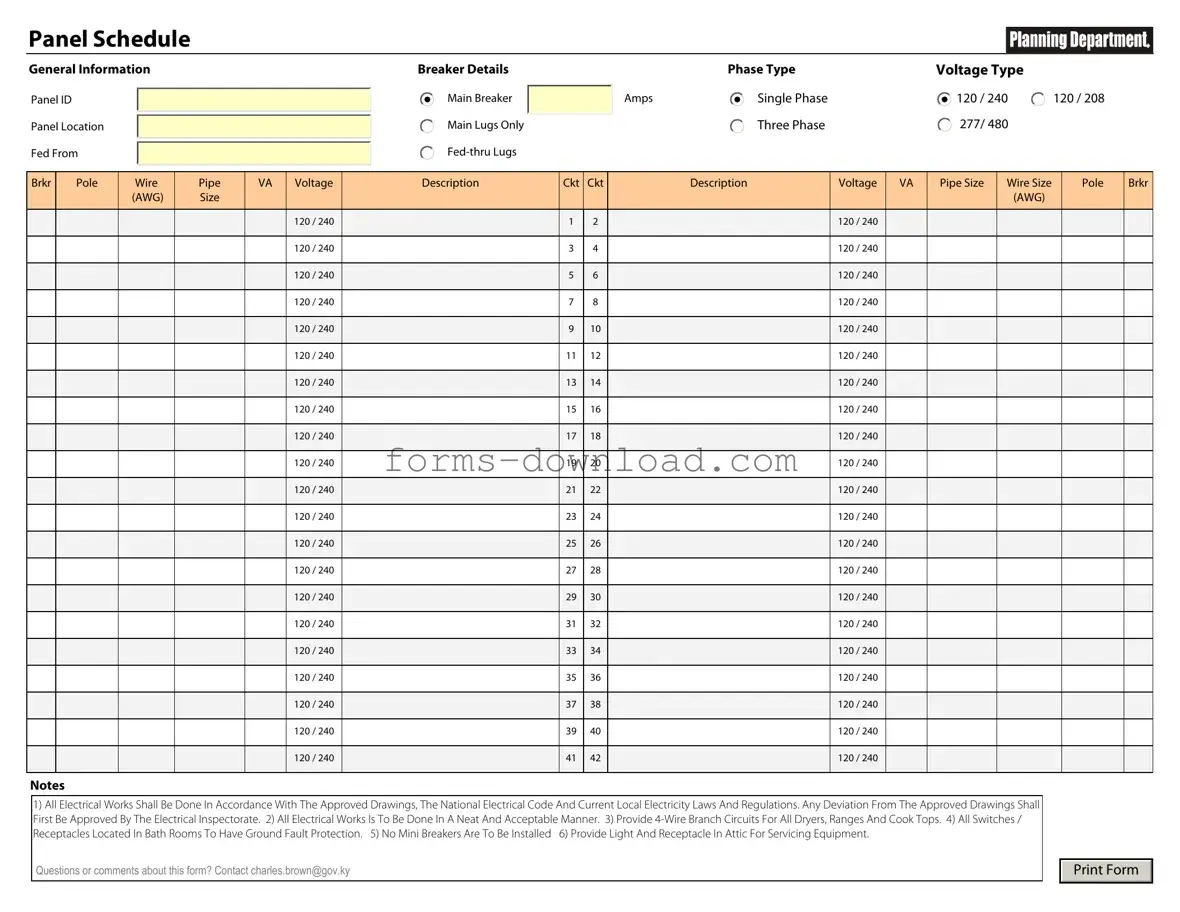The Electrical Panel Schedule form serves as a crucial document in the realm of electrical installations and maintenance. It provides a comprehensive overview of the electrical distribution system within a building, detailing the circuits, their respective loads, and the associated breakers. This form typically includes essential information such as the panel's location, the amperage rating, and the voltage specifications, which are vital for ensuring safety and compliance with electrical codes. Additionally, the schedule outlines the specific circuits connected to each breaker, enabling electricians and maintenance personnel to quickly identify and address any issues that may arise. By organizing this information in a clear and accessible format, the Electrical Panel Schedule form not only enhances operational efficiency but also plays a significant role in facilitating inspections and audits. Properly maintained schedules can help prevent overloads and other electrical hazards, ultimately contributing to the overall safety and reliability of the electrical system.

